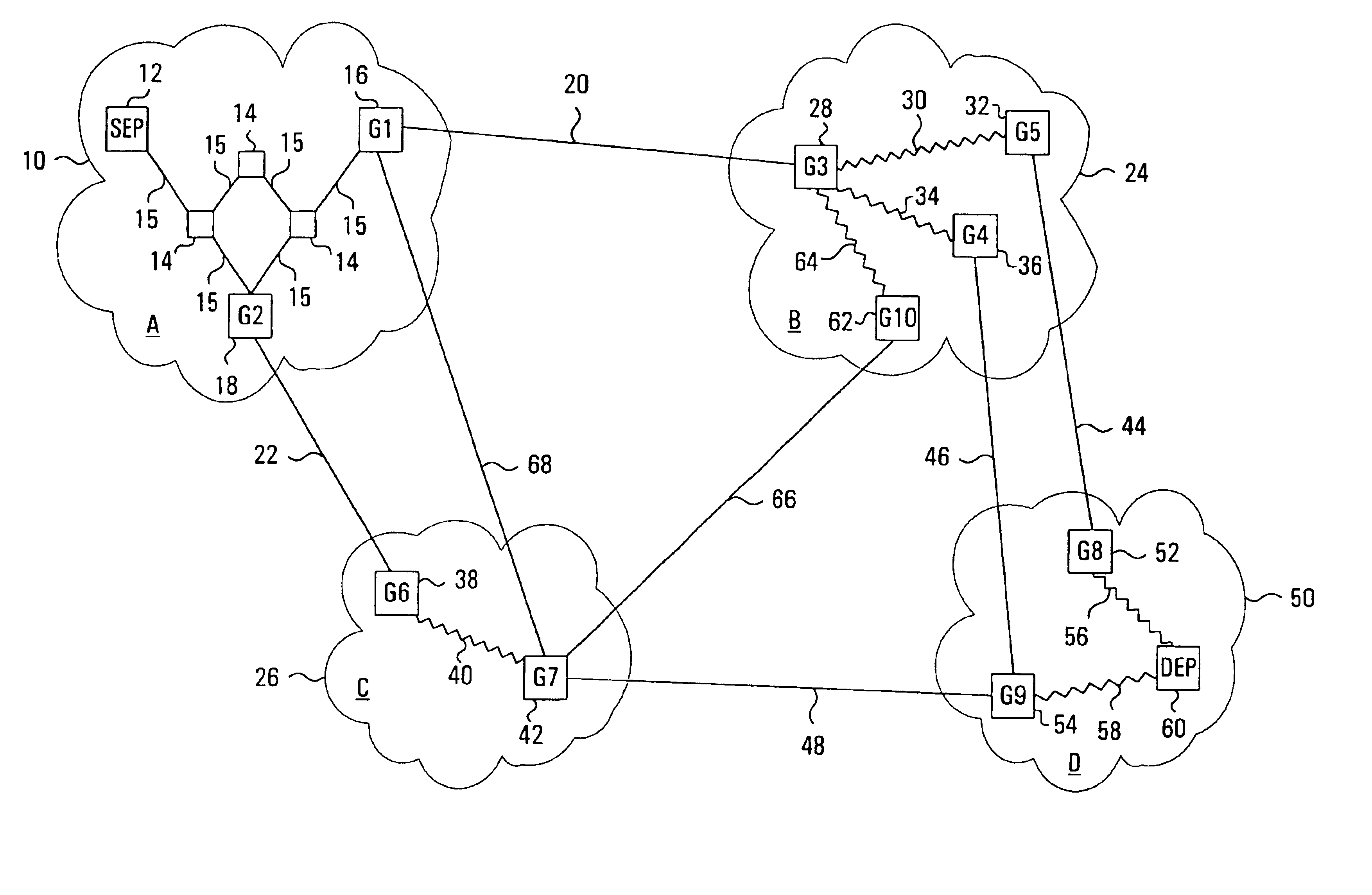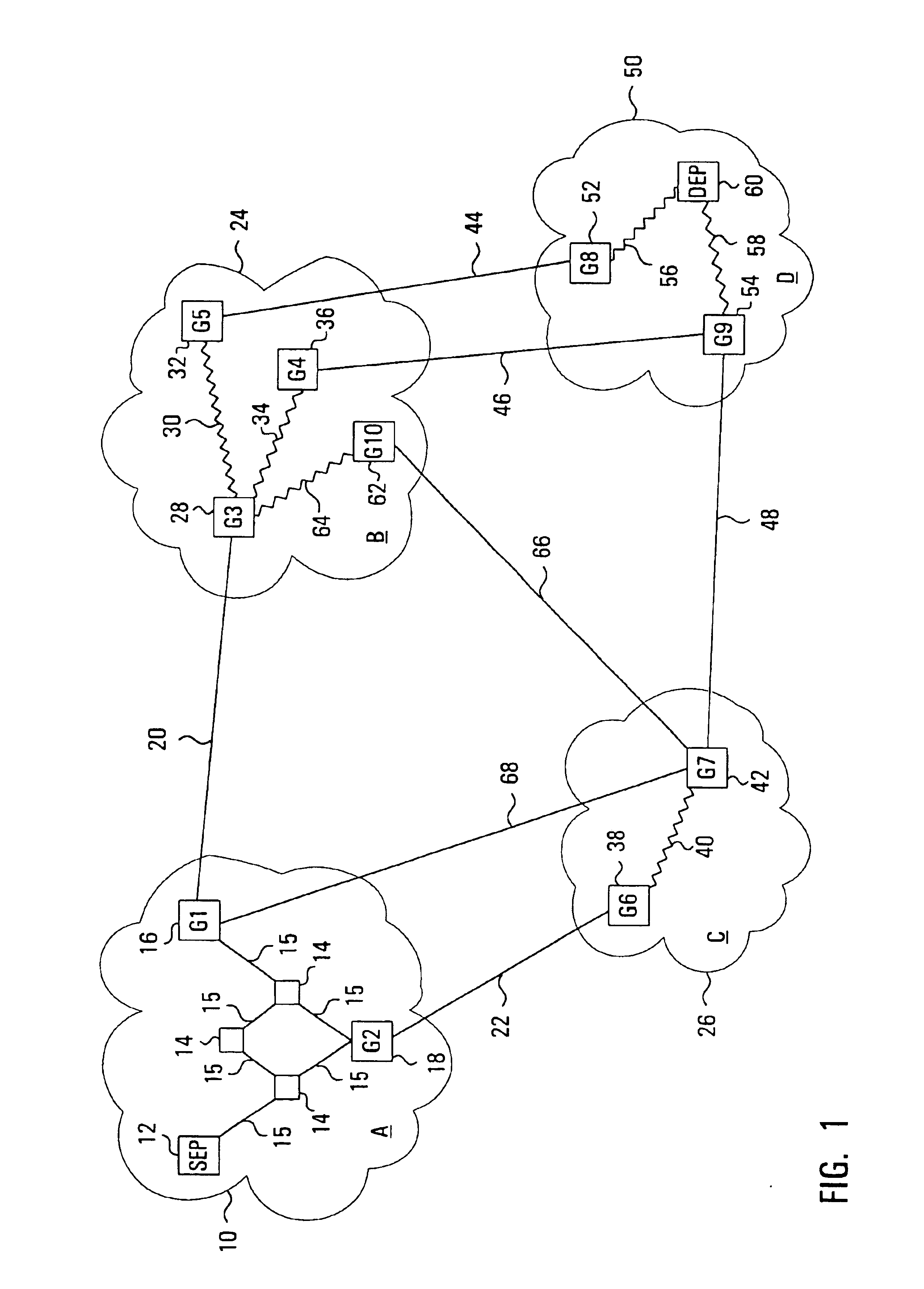Quasi-deterministic gateway selection algorithm for multi-domain source routed networks
- Summary
- Abstract
- Description
- Claims
- Application Information
AI Technical Summary
Benefits of technology
Problems solved by technology
Method used
Image
Examples
Embodiment Construction
An instantiation of an embodiment of the invention will be described with reference to an example of a multi-domain network, illustrated in FIG. 1. The network of FIG. 1 consists of four domains: domain A 10, domain B 24, domain C 26, and domain D 50. Domain A 10 contains a Source End Point (SEP) 12 from which a connection originates, several other nodes 14 interconnected with intra-domain links 15, and two nodes which act as gateways 16 and 18 denoted by G1 and G2. G116 is connected to another gateway G328 in an adjacent domain, domain B 24, via an inter-domain link 20, and to another gateway G742 in another adjacent domain, domain C 26, via inter-domain link 68. Likewise, G218 is connected to a gateway G638 in domain C 26 via the inter-domain link 22. Domain D 50 contains a Destination End Point (DEP) 60 to which it is assumed the SEP 12 needs to be connected. Domain B 24 and domain C 26 are each connected to each other and to domain D 50, through other gateways and inter-domain l...
PUM
 Login to View More
Login to View More Abstract
Description
Claims
Application Information
 Login to View More
Login to View More - R&D
- Intellectual Property
- Life Sciences
- Materials
- Tech Scout
- Unparalleled Data Quality
- Higher Quality Content
- 60% Fewer Hallucinations
Browse by: Latest US Patents, China's latest patents, Technical Efficacy Thesaurus, Application Domain, Technology Topic, Popular Technical Reports.
© 2025 PatSnap. All rights reserved.Legal|Privacy policy|Modern Slavery Act Transparency Statement|Sitemap|About US| Contact US: help@patsnap.com



